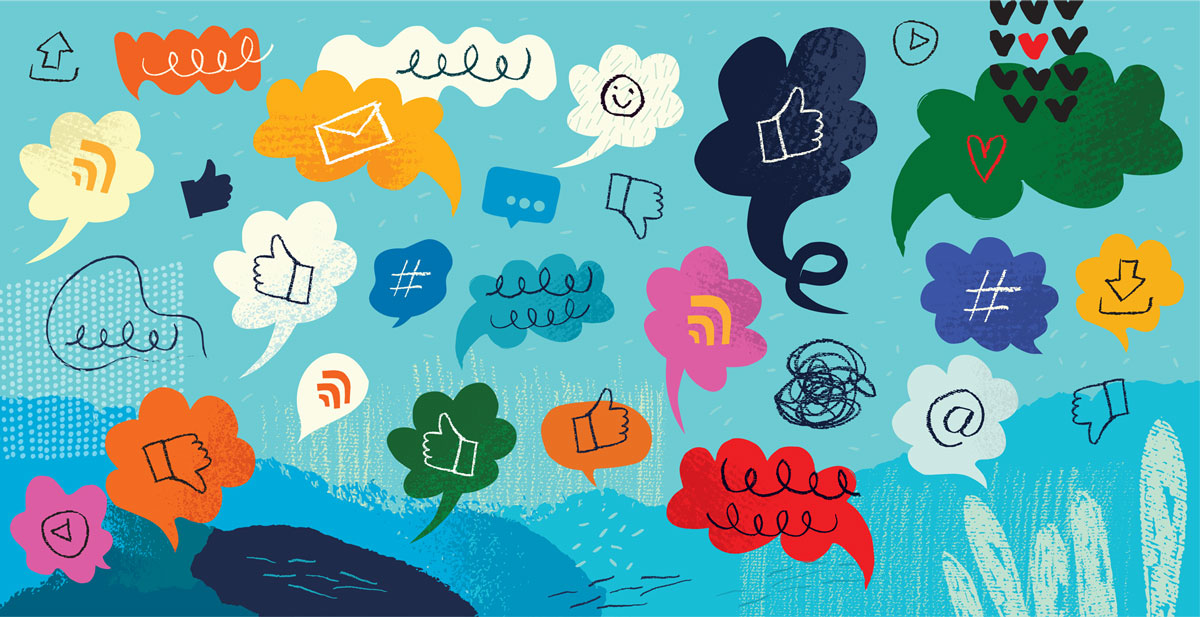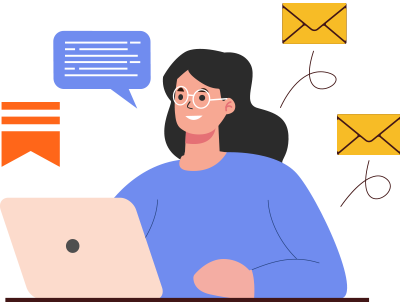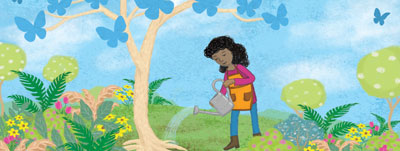Improve Your Social Media Life
Had it with X? Here’s how to get the most out of other platforms and dig deep into Substack.
 |
Getty Images/DrAfter123 |
It’s tough to navigate social media these days. For starters, it takes time to assess how a platform serves your needs and represents your community, and then to build a following. Many spaces librarians used to rely on to share information and connect with others—Facebook, X (formerly Twitter), TikTok, Instagram—have changed.
It’s not just the frustrating algorithms, advertisements, or the privacy concerns impacting the utility of these platforms that are issues. It’s the questionable ethics of the owners and whether they truly care about users’ concerns.
Increasingly, user behavior can pose a threat to librarians, especially when library professionals and educators are frequently cast as dangerous and immoral. And what happens when the platform disappears or becomes subject to legislation, like TikTok still may?
All of which begs the question: when is the latest social media product worth joining—and when is it time to leave another?
“I have wondered about stopping X. The negativity can be toxic,” says Tricia LaRue, a teacher librarian at Mountain Range High School in Westminster, CO.
That negativity can run from annoying bots and trolls to accounts that purposefully target others to create a pile-on effect, which may in turn require a user to spend hours—or days!—blocking and muting other users.
When LaRue started handling social media for the library, she stuck to Facebook and X. But lower engagement from her target audience—students and parents—encouraged her to build an Instagram page, too. LaRue continues to use X, despite the drawbacks, because of the ease to reshare content.
Also read: "Back-to-School Innovations from 10 School Librarians"
She hasn’t tried other platforms, but the main school website and athletics department have Threads accounts. Other departments have used TikTok and Instagram to promote events.
Like LaRue, Alexa Lalejini, a school librarian at the Rockford Freshman Center in Rockford, MI, used to find X an excellent spot for professional development and inspiration but now finds it too open to toxic behavior.
Her library no longer has public-facing social media. “With so many people who are looking to make the librarians villains, I didn’t think [it] was a good way to connect anymore,” said Lalejini. “It’s so frustrating, because I would love to show parents all the fabulous things we are doing in the library, but with groups out to spread hate it just doesn’t work anymore.”
One consequence? The disbursement of librarians and personal learning networks (PLNs) across different social media platforms. All have flaws, but two promising ones are Substack and BlueSky. Here are tips for creating, learning, and networking there, plus book- and librarian-centric Substack accounts to check out.
All About Substack
Substack occupies an interesting intersection of blogging and social media. It’s a publishing platform that began in 2017 but has seen tremendous growth as people discover its many tools and wealth of engaging writing. The platform’s adaptability offers librarians options to build a presence that is flexible, adaptable, and intuitive. If you’ve used Facebook, X, Instagram, or WordPress or Blogger, you’ll find Substack offers some of the best of each.
A qualification: like legacy social media, Substack has come under fire for some of its policies, including a hands-off approach to moderating. Some of the same issues on X or Facebook—transphobia, mis- and disinformation—exist on Substack, too. Many creators on Substack also use their spaces to speak up about these issues.
 |
Getty Images/Heena Rajput |
Brass tacks
Substack is on the web and has a free app. It started as a publishing platform for people to write and send newsletters and has evolved to offer a range of ways to engage with authors, creatives, and people in any industry.
Think of it as a return to blogging and an evolution from blogging: a newsletter is like a blog post, but users can also opt to receive each newsletter right to their inbox. In an era where RSS feeds have winnowed away, this is both convenient and practical. Even if you can’t read a newsletter the moment it hits your inbox, you can access it when you want without needing to go to a web address.
Substack’s subscription model means that while there’s a lot of free content, creators can charge subscription fees for their work, too. The monthly cost is generally between $5 and $9; creators get that money after a small cut by Substack, similar to platforms like Patreon.
Some Substacks are free, others behind a subscription paywall, and some offer both free and paid content. Paywalled content shows up with a lock on individual Substacks or as a newsletter preview when it hits your inbox. Creators can lock or unlock content as they want; something might be free via newsletter and locked on the creator’s page.
Newsletters may be the platform’s bread and butter, but it offers much more. The Notes feature lets users share content like they do on social media. Notes doesn’t hit subscriber inboxes; it operates like X in that posting several times a day is common. And Notes has its own feed: when you log in, you can see Notes posted by those you follow, plus a feed of other users to discover.
As for podcast and video creation tools, users can create audio snippets or full-on podcasts that can stand alone or be embedded into newsletters or notes posts. The video features can also be embedded right into newsletters. A chat feature in Substack also allows creators to message directly with subscribers.
Creating a Substack account is free, as are its tools. You can access a lot of content without signing up by going directly to the pages of creators you’re interested in; having an account, though, will grant access to a centralized feed, which will let you read or share notes or newsletters in one place. Think of it a little bit like an RSS feed, but for the content you’re interested in on Substack.
When Substack newsletter creators opt to create a fee-based subscription model for their work, it’s akin to paying for a digital newspaper like the New York Times, in that you might read a preview but then need to pay for further access, either at a monthly or annual cost. But even monetized Substack newsletters often have plenty of free content, so if your budget is zero, you won’t miss out entirely. Paywalled content is easy to identify with its lock icon.
If you use the platform to create content, you can make more than one Substack under a single login. This allows libraries with one account to have multiple newsletters. You can download and keep the list of your subscribers, too, so you know who is getting everything you send.
What do I do on Substack?
So how should you use Substack? Perhaps your library offers a serialized novel via email through the summer reading program or wants to share monthly librarian picks for favorite books read. Maybe you’re looking for a virtual book club option to engage young people without needing them to show up to a set meeting time or date. You can create Substacks for all. Take inspiration from what others are doing, too.
Some Substackers have book clubs, including author Roxane Gay, who hosts her Audacious Book Club there. It’s a mixture of mostly free newsletters and chat posts, with subscriber-only posts peppered in. Gay brings in authors and offers Zoom chats as a subscriber perk.
Children’s literature artists have embraced the platform, too, and some of the most engaged offer behind-the-scenes views of their process. Carson Ellis shares glimpses of her life and her work, while Lian Cho expands her illustration work and explores the creative process on her Am I Doing This Right? YA author Susan Dennard has built a healthy Substack community about the writing life, publishing, and more; via subscription, she also offers short stories and “Ask Me Anything” sessions.
Substack lends itself to serialized work as well, and some of it may hold teen appeal. Contemporary writers share their work in this capacity, and creators share public domain work in inventive ways. Know any teen horror fans? Direct them to Daily Dracula, which publishes a daily newsletter between May 3 and November 7 (the Dracula time frame) with a snippet from the novel in each. A similar project, Poe Fortnightly, shares biweekly work from the Gothic master Edgar Allan Poe. Author Austin Kleon shares things that he finds interesting or exciting each week. Like his books Steal Like an Artist and Show Your Work!, his free newsletters are engaging and inspiring. He uses the Notes feature much like X, sharing his work and what he’s inspired by.
There’s plenty more for book lovers of all stripes. Ashley Holstrom’s Crooked Reads offers essays about the reading life and roundups on themes from “Strange Science Books About Animals” to “Realistic Money Books That Won’t Make You Feel Bad.” Black Books + Black Minds is dedicated to talking about the history of race and racism in literature and publishing. What to Read If offers up weekly book recommendations on a theme, plus interesting short author interviews. Want to find books that haven’t gotten the buzz they deserve? Reading Under the Radar will be up your alley.
|
Read next: "Getting Up to Speed on Bluesky" |
Library-related content
School librarians can keep up with artificial intelligence (AI) developments through librarian Elissa Malespina’s Substack. She offers insight and tutorials for using these tools in the library.
Crafty Mx. Librarian offers a wide range of posts on topics relevant to youth librarians, and they use Substack much like a blog. Among their posts are book reviews and recommendations, book display ideas, and loads of fun craft and programming ideas.
Library Chrissie, an elementary school teacher librarian, has utilized Substack to send out free monthly newsletters. She writes about great graphic novels, reflections on working in the library, books that passed the read-aloud test with students, and more. A paid subscription comes with weekly bonus content about all things books and libraries.
Need more book recommendations and library musings from a school librarian? The Mindful Librarian has all that and more. The mix of subscriber and free content ranges from thematic booklists to various sources for audiobooks.
Are you ready for Substack now? Go forth, explore, and create! And get up to speed on BlueSky as well.
Kelly Jensen is an editor at Book Riot and an author.
RELATED
The job outlook in 2030: Librarians will be in demand
The job outlook in 2030: Librarians will be in demand
ALREADY A SUBSCRIBER? LOG IN
We are currently offering this content for free. Sign up now to activate your personal profile, where you can save articles for future viewing







Add Comment :-
Be the first reader to comment.
Comment Policy:
Comment should not be empty !!!